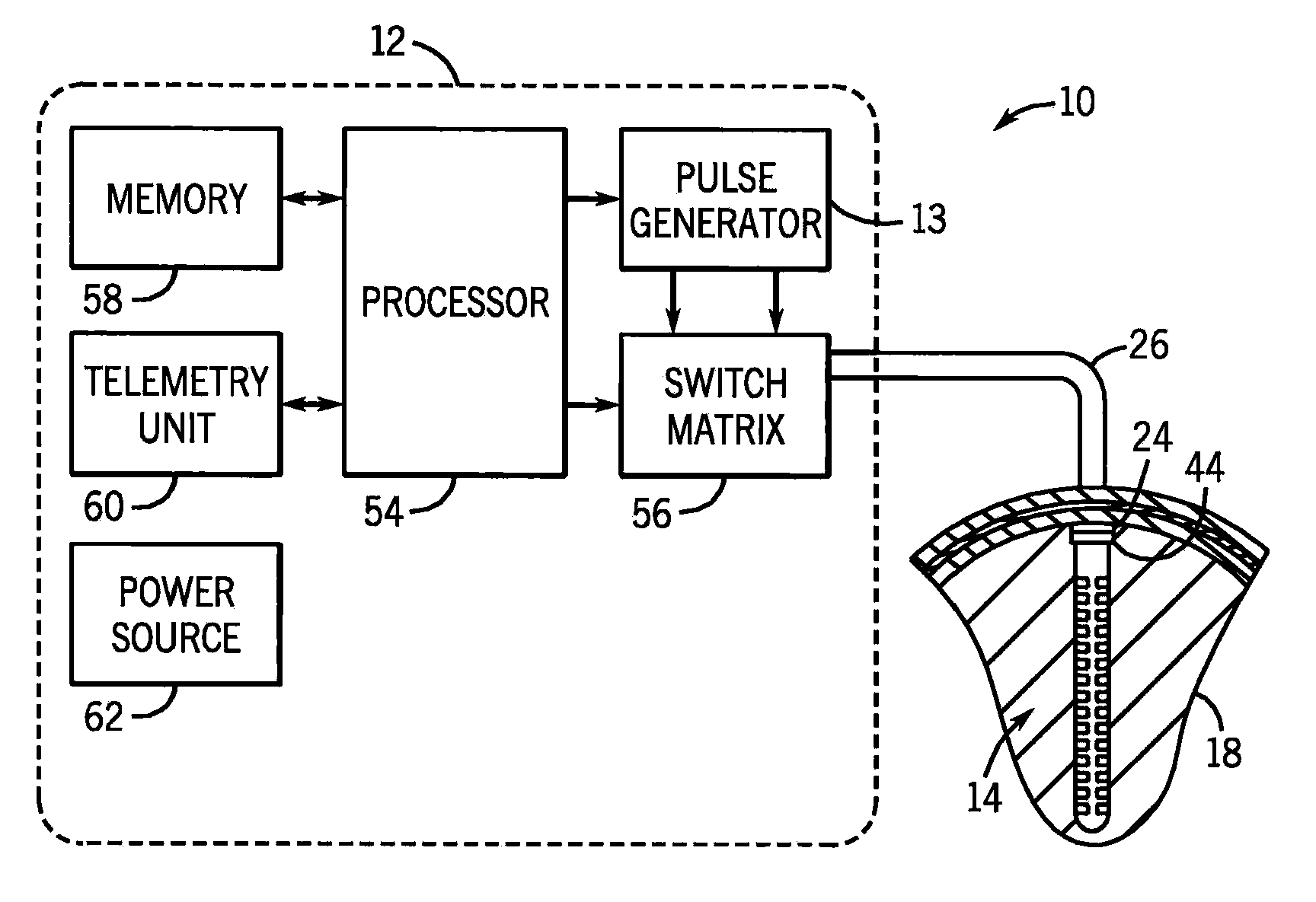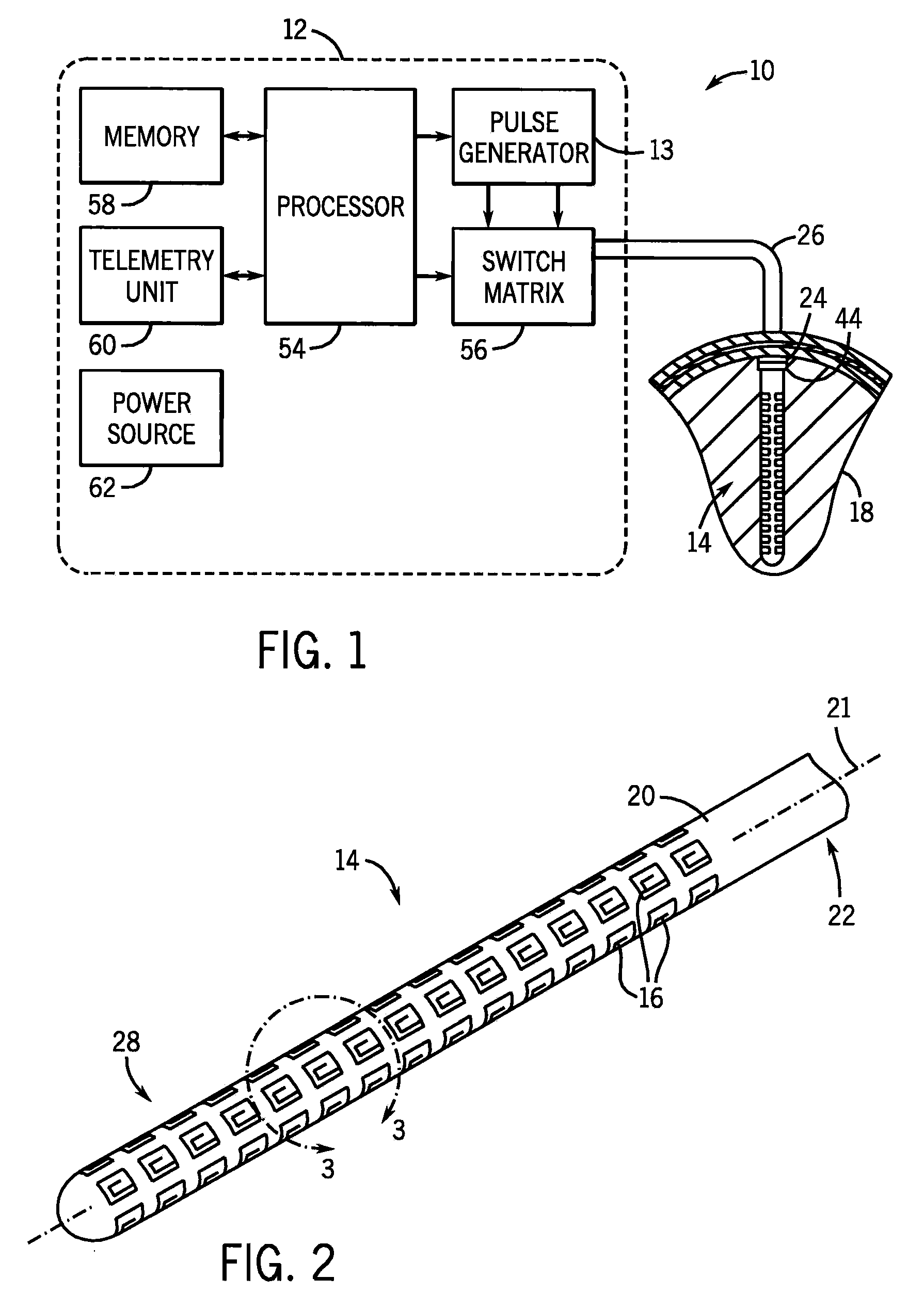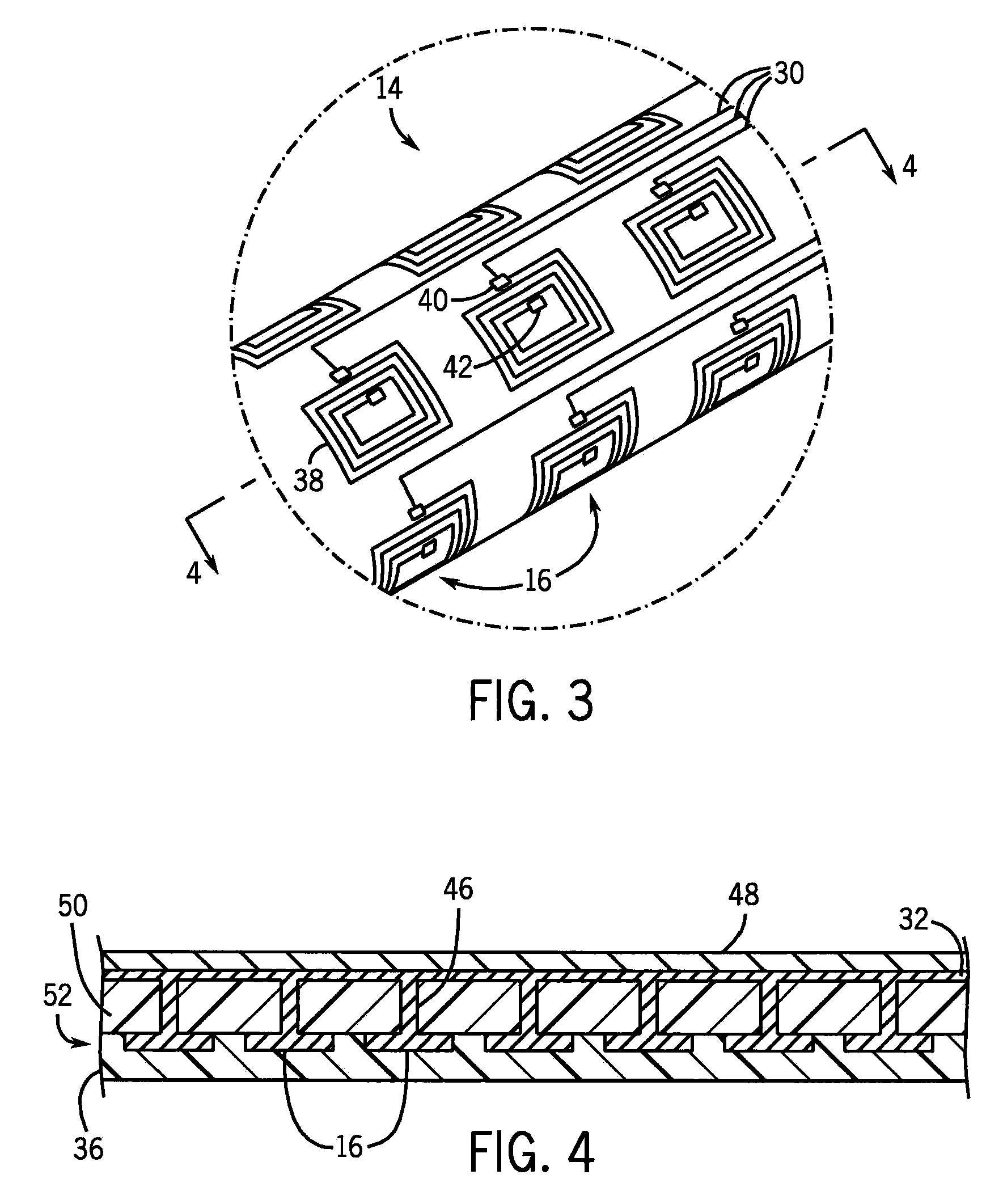Deep brain stimulation implant with microcoil array
a brain stimulation and microcoil technology, applied in the field of deep brain stimulation implants with microcoil arrays, can solve the problems of poor spatial resolution of existing dbs implants, limited number of electrodes per implant, and limited number of conventional cylindrical dbs implants
- Summary
- Abstract
- Description
- Claims
- Application Information
AI Technical Summary
Benefits of technology
Problems solved by technology
Method used
Image
Examples
Embodiment Construction
[0023]Referring initially to FIGS. 1 and 2, a deep brain stimulation system 10 includes a stimulator 12 coupled to an implantable device 14 (referred to hereinafter as an ‘implant’) with an array of planar electromagnetic microcoils 16. The stimulator 12 includes a pulse generator 13 that generates electrical pulses for delivery to a targeted stimulation site in a human brain 18 via the implant 14. The electrical pulses cause the microcoils 16 to produce magnetic fields that are directed perpendicularly into the brain 18. The magnetic fields, in turn, induce electrical currents in brain tissue to excite the neurons therein.
[0024]The implant 14 is configured as an elongated insertion probe with a narrow cylindrical shaft 20 defining a longitudinal axis 21. The shaft 20 includes a proximal portion 22 with a connector 24 coupled to the stimulator 12 via a pair of leads 26 and a distal portion 28 with a plurality of spaced-apart microcoils 16. The implant 14 also includes a plurality of...
PUM
 Login to View More
Login to View More Abstract
Description
Claims
Application Information
 Login to View More
Login to View More - R&D
- Intellectual Property
- Life Sciences
- Materials
- Tech Scout
- Unparalleled Data Quality
- Higher Quality Content
- 60% Fewer Hallucinations
Browse by: Latest US Patents, China's latest patents, Technical Efficacy Thesaurus, Application Domain, Technology Topic, Popular Technical Reports.
© 2025 PatSnap. All rights reserved.Legal|Privacy policy|Modern Slavery Act Transparency Statement|Sitemap|About US| Contact US: help@patsnap.com



